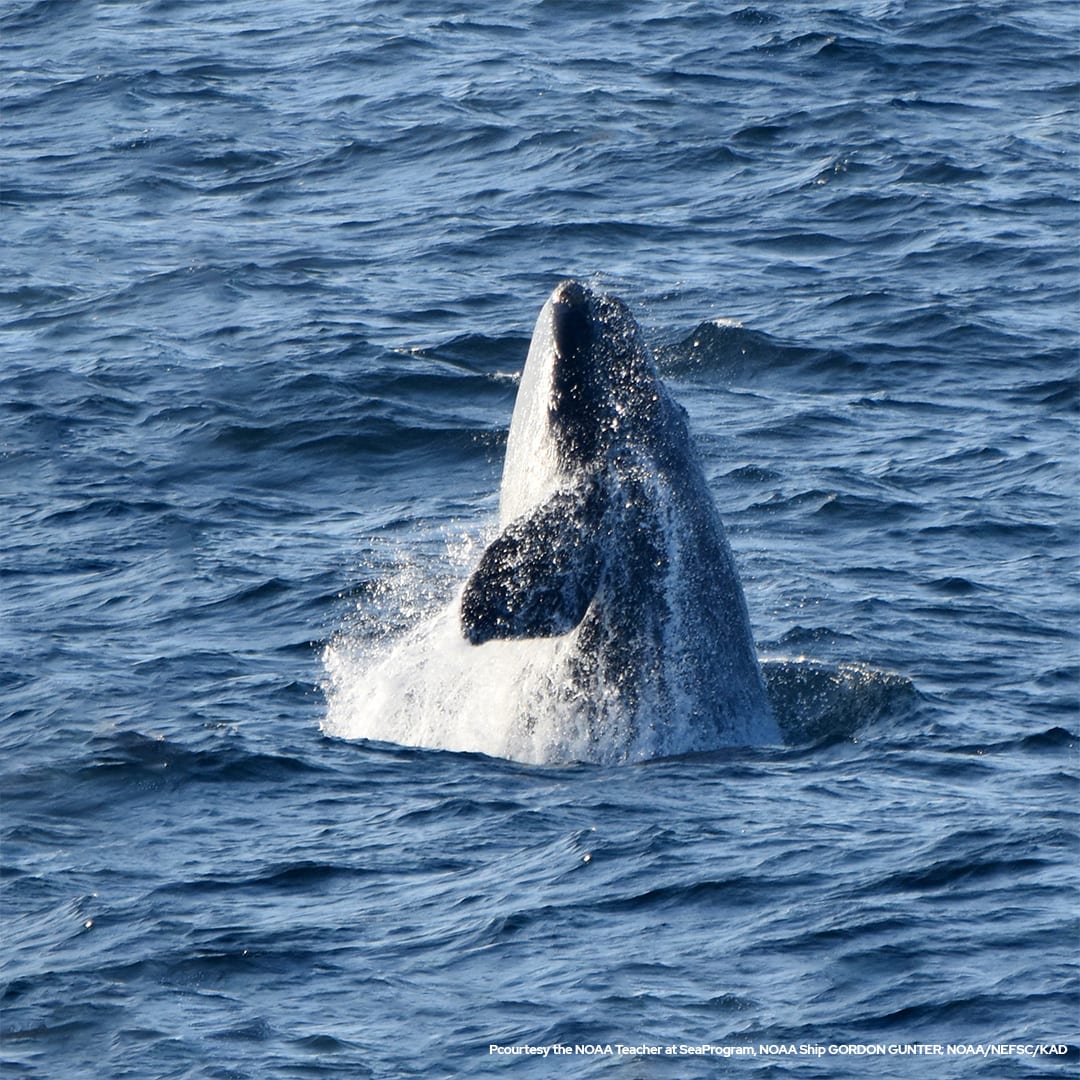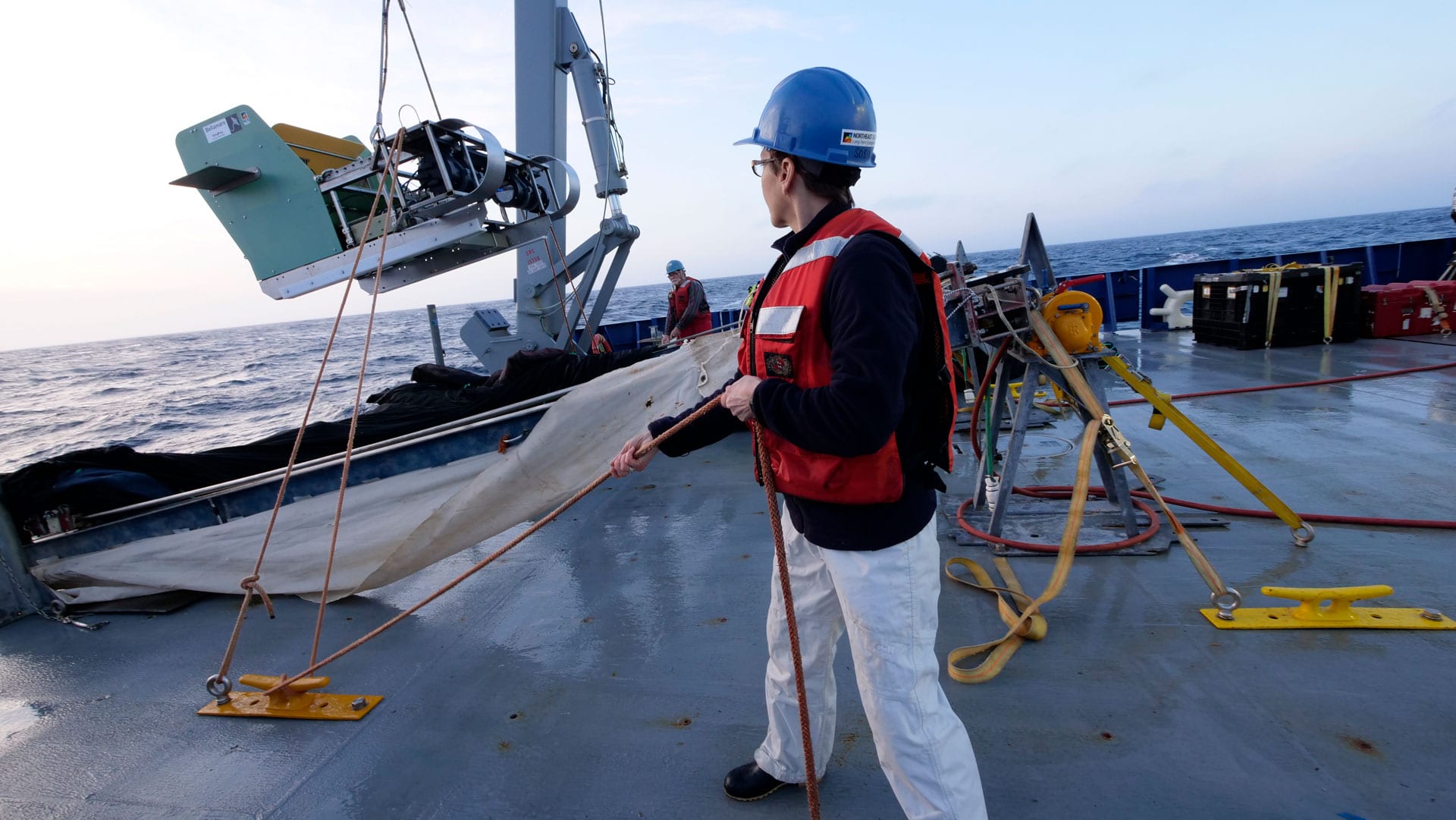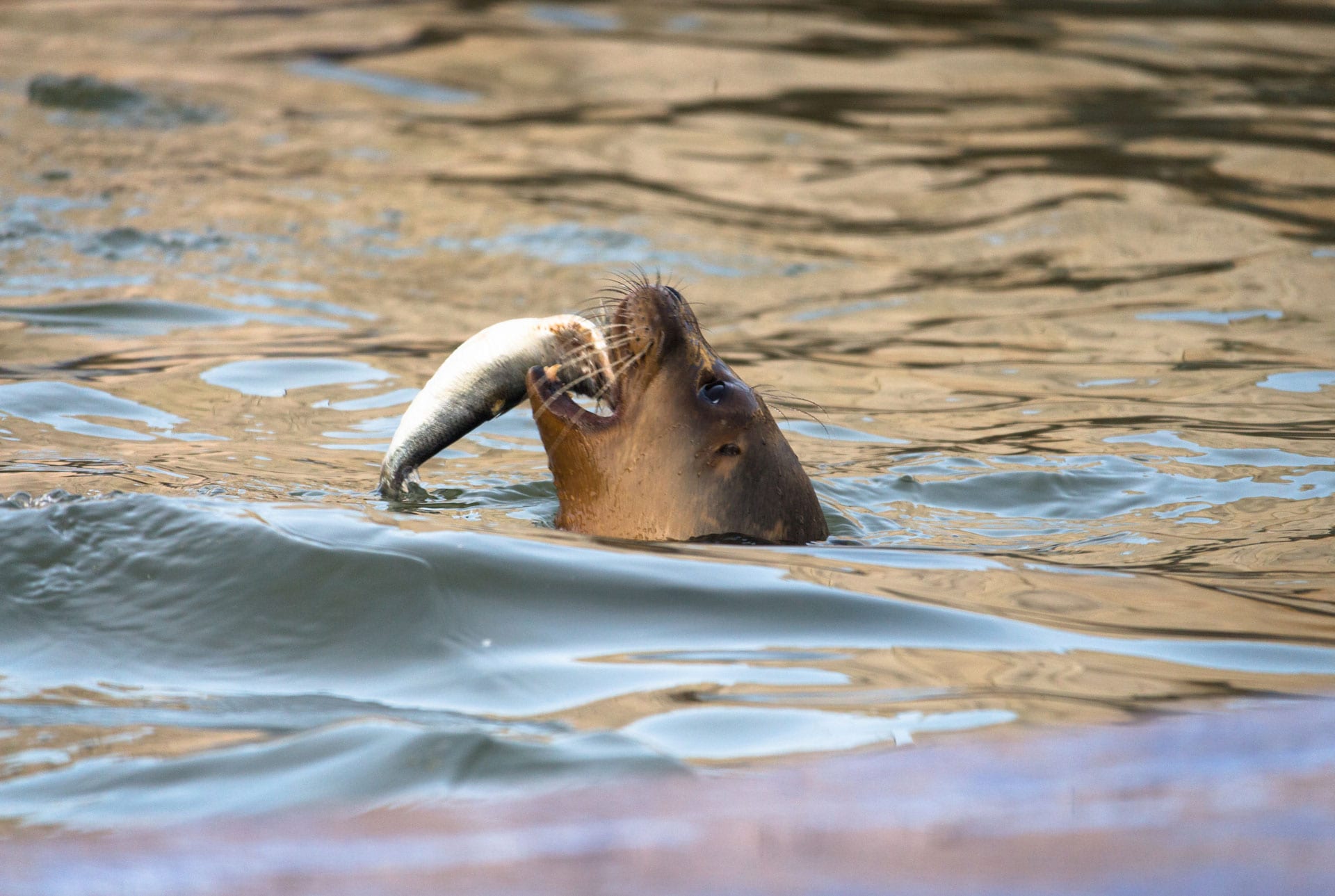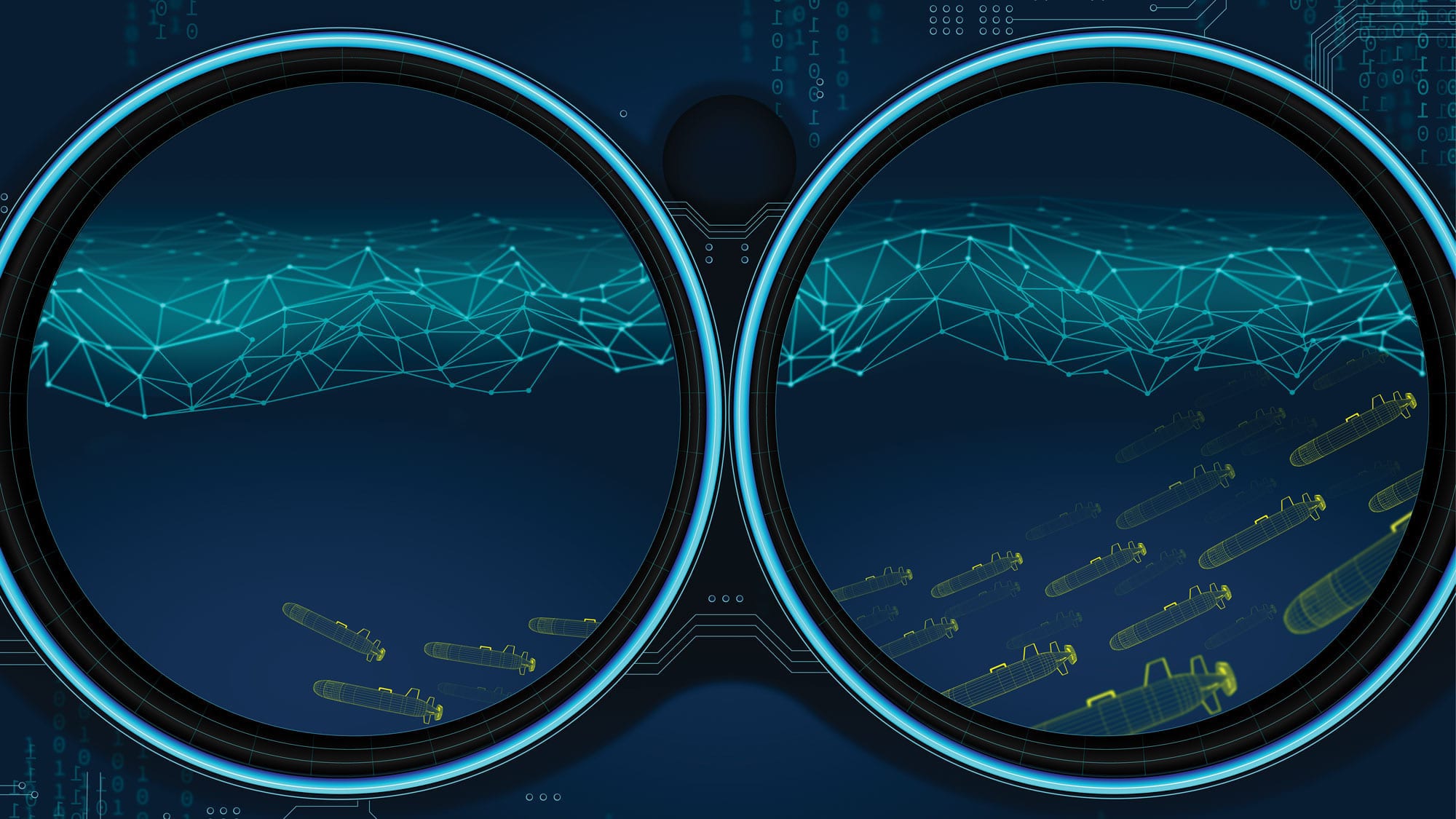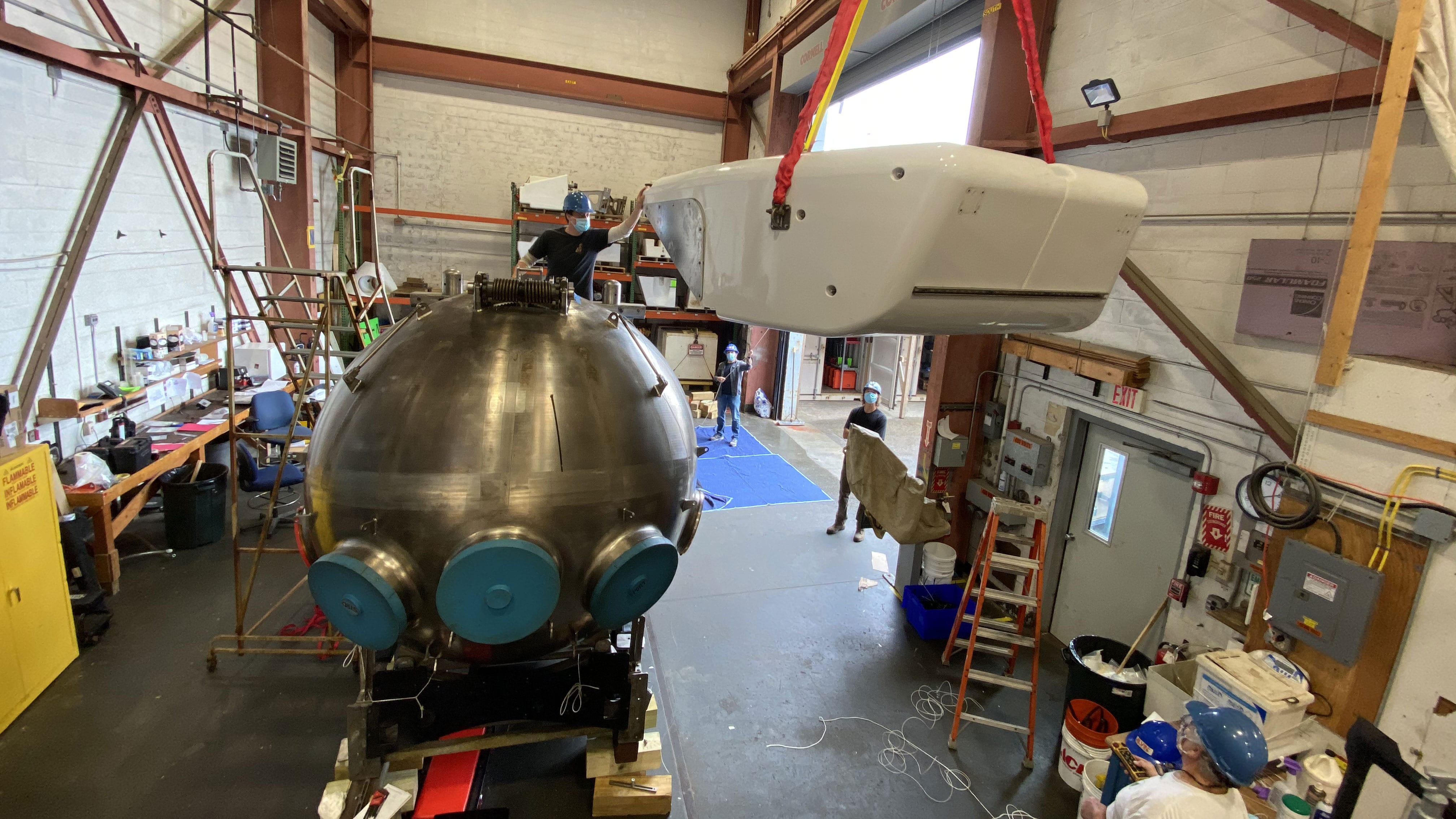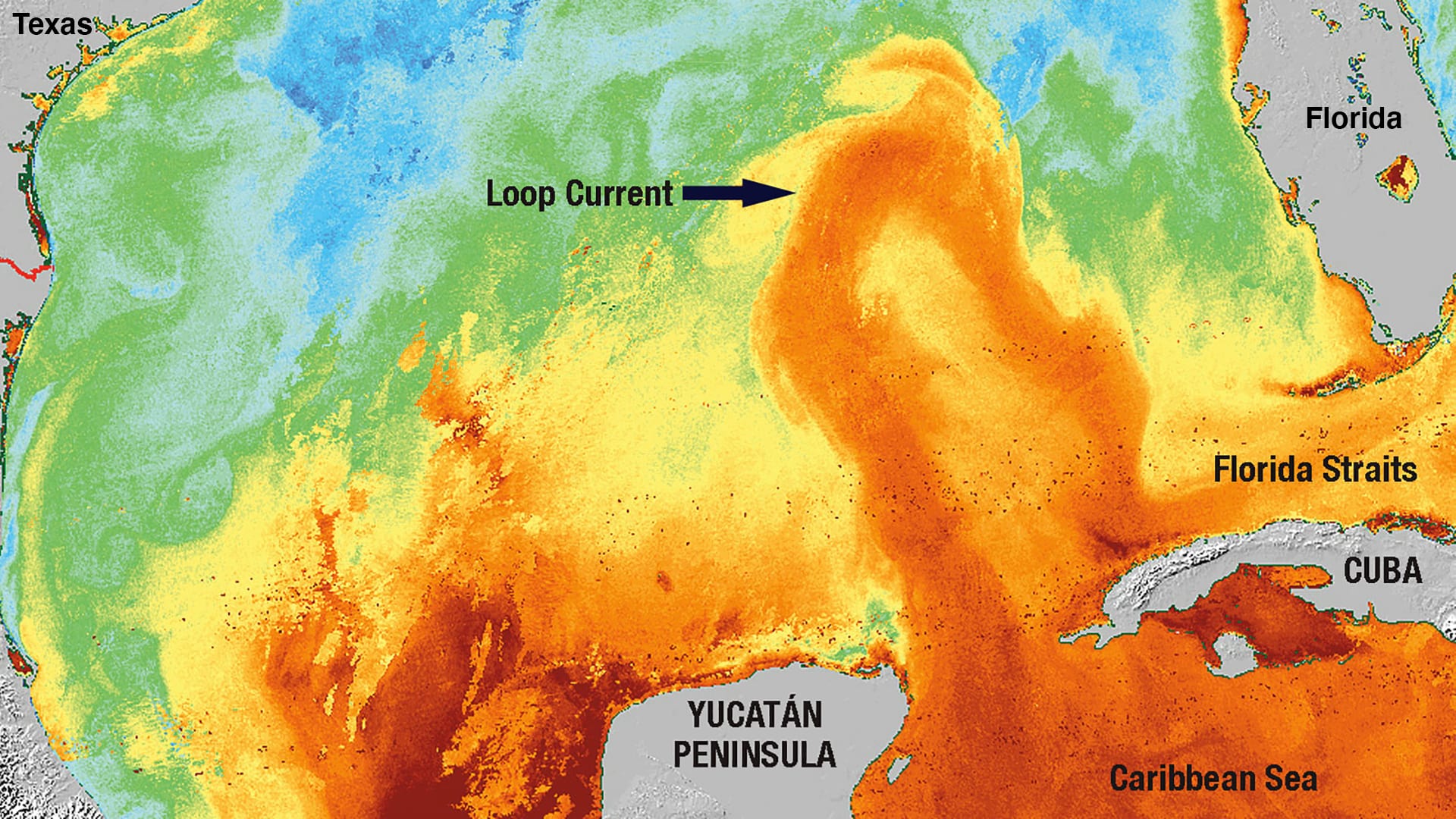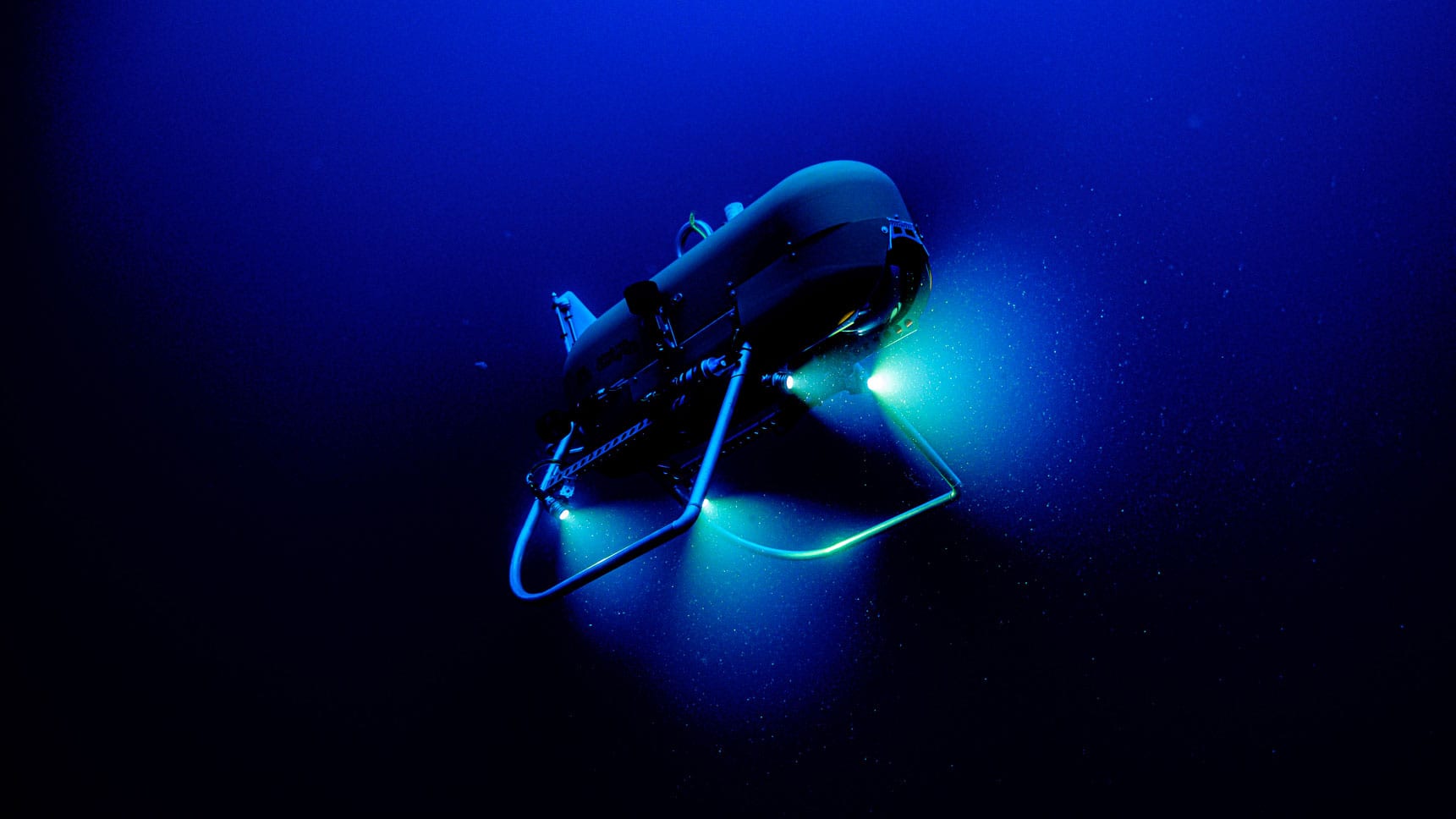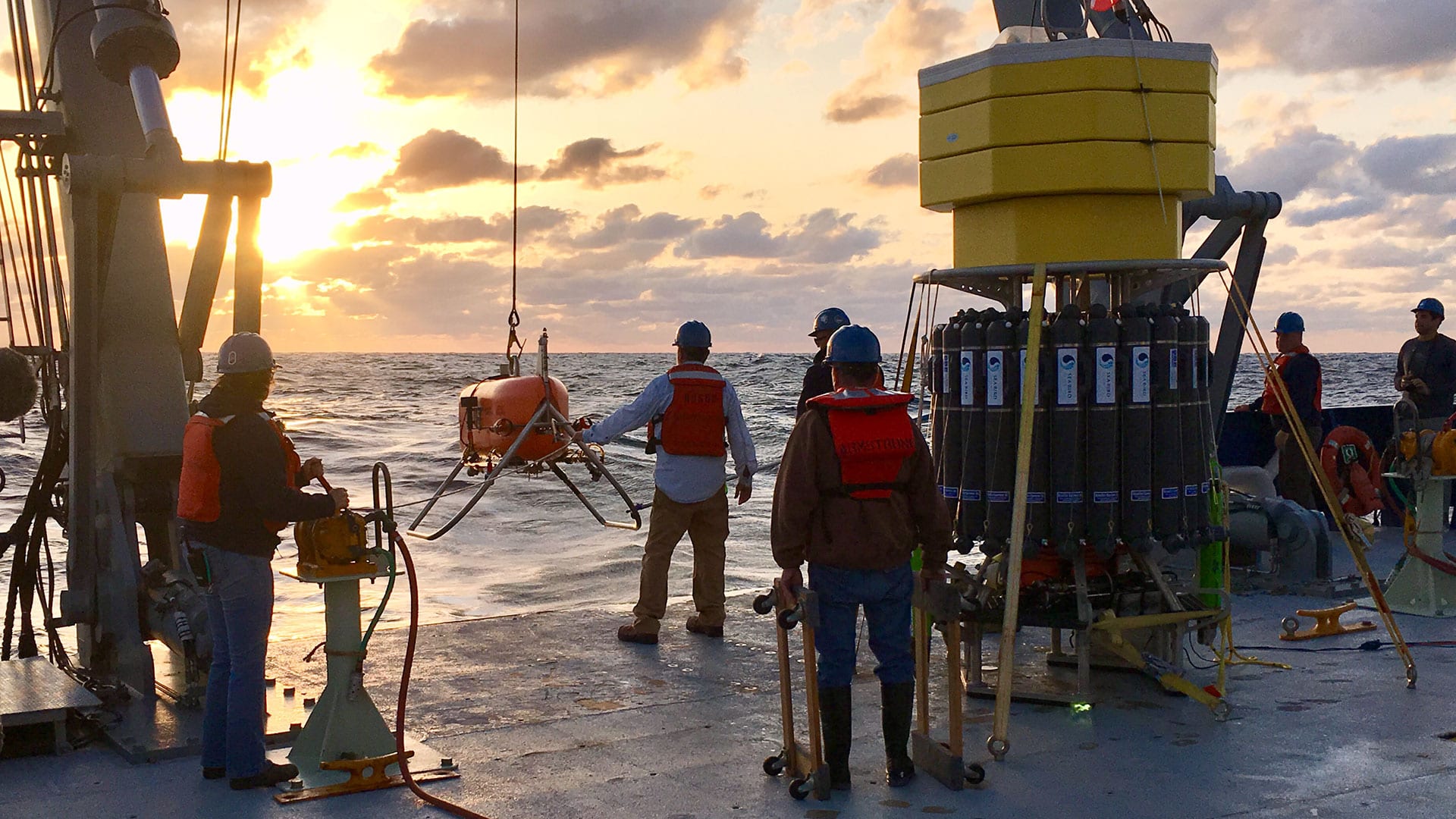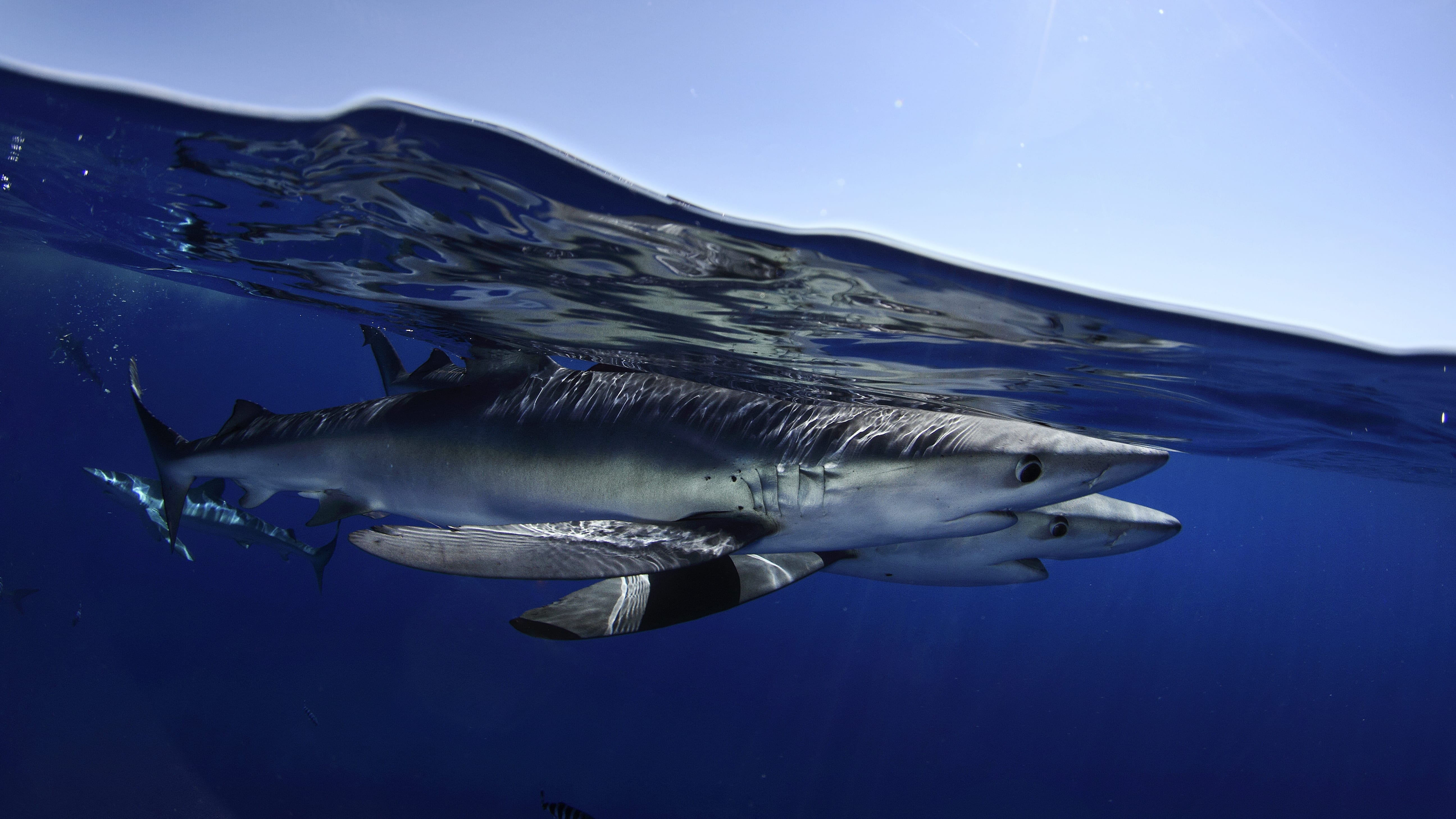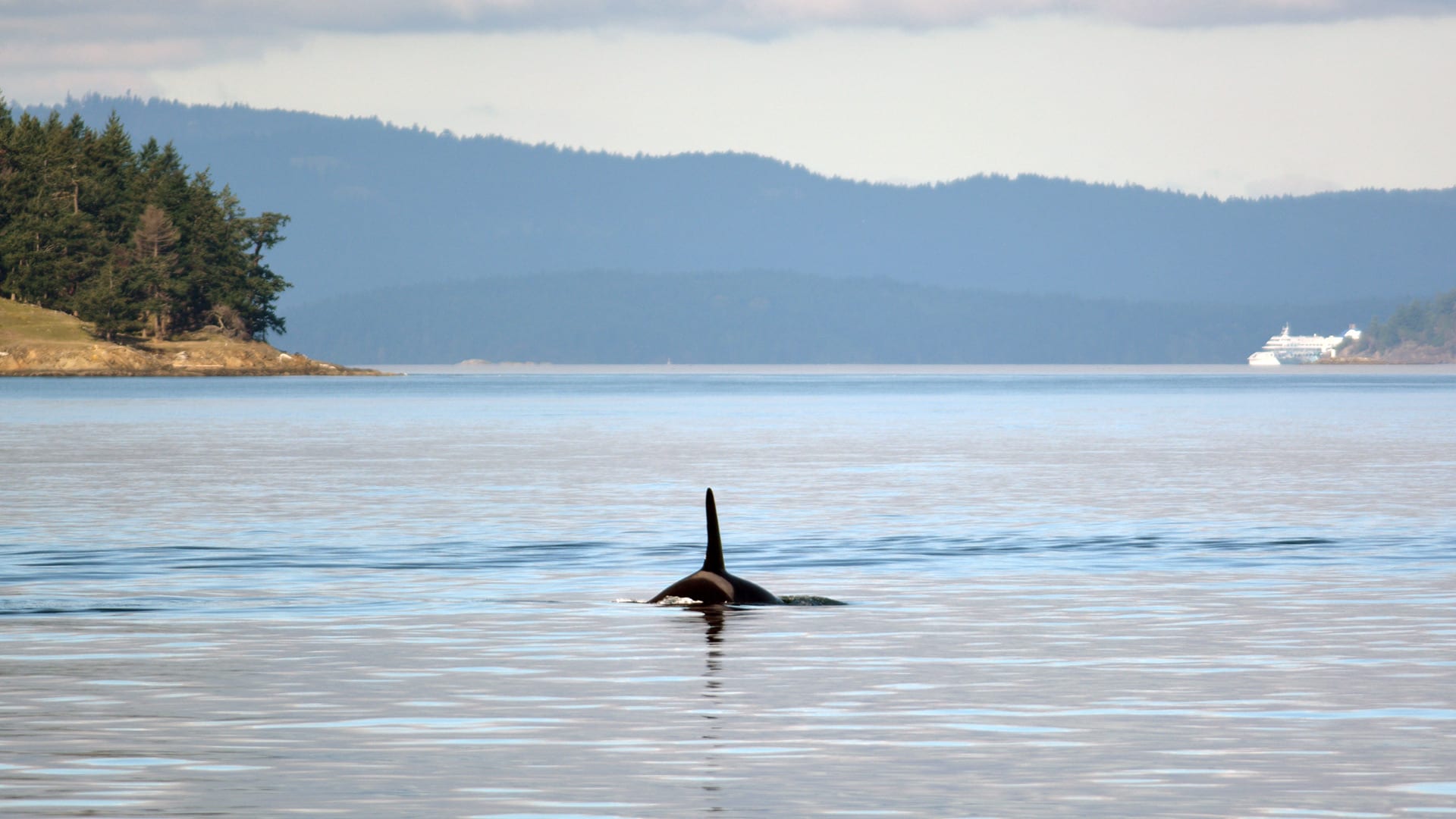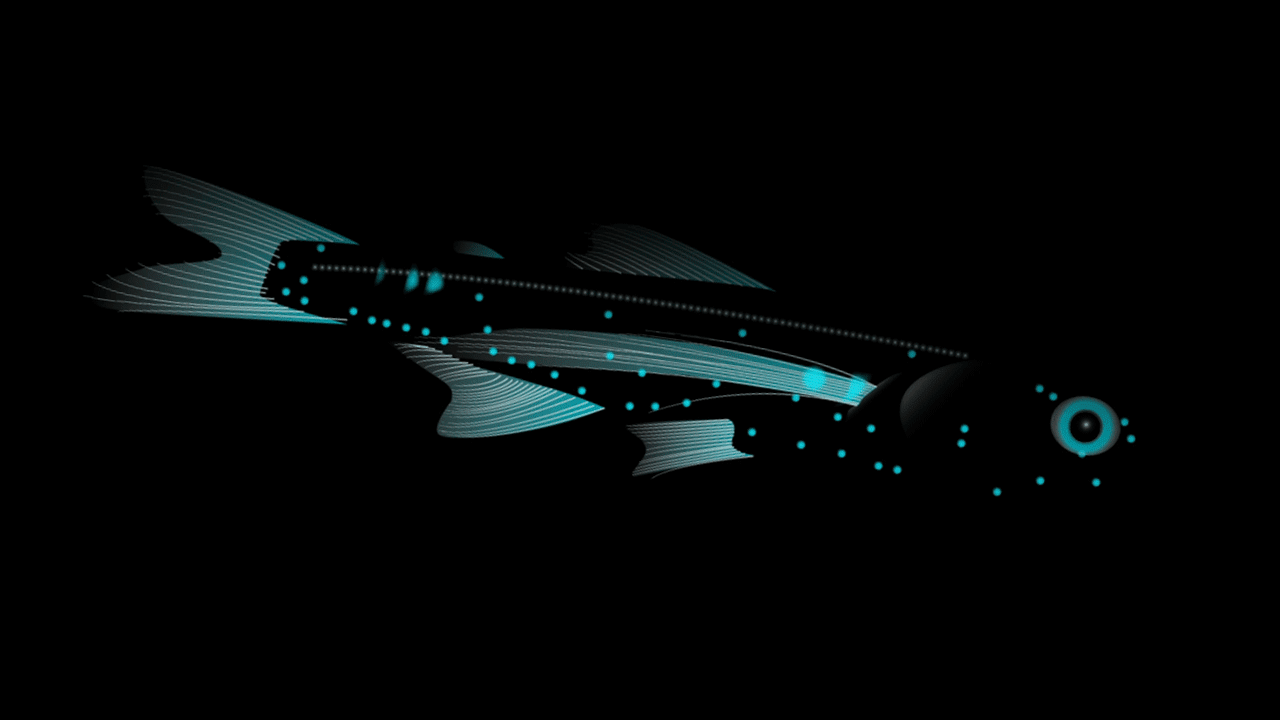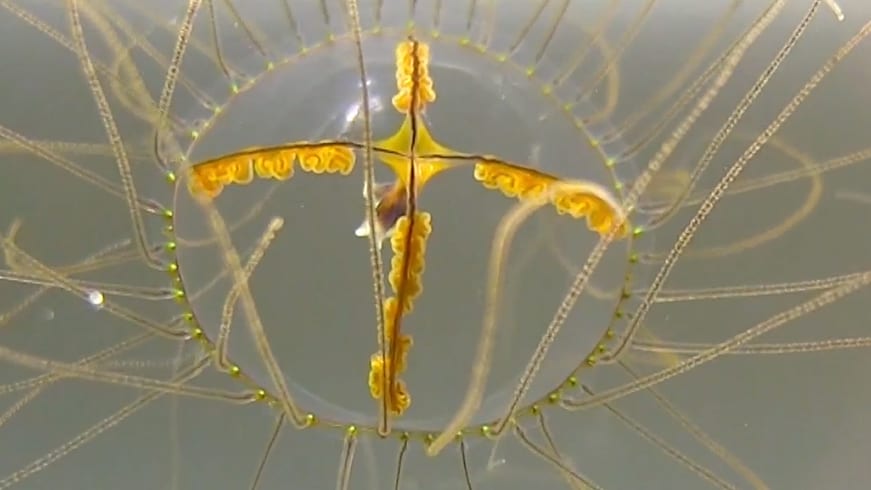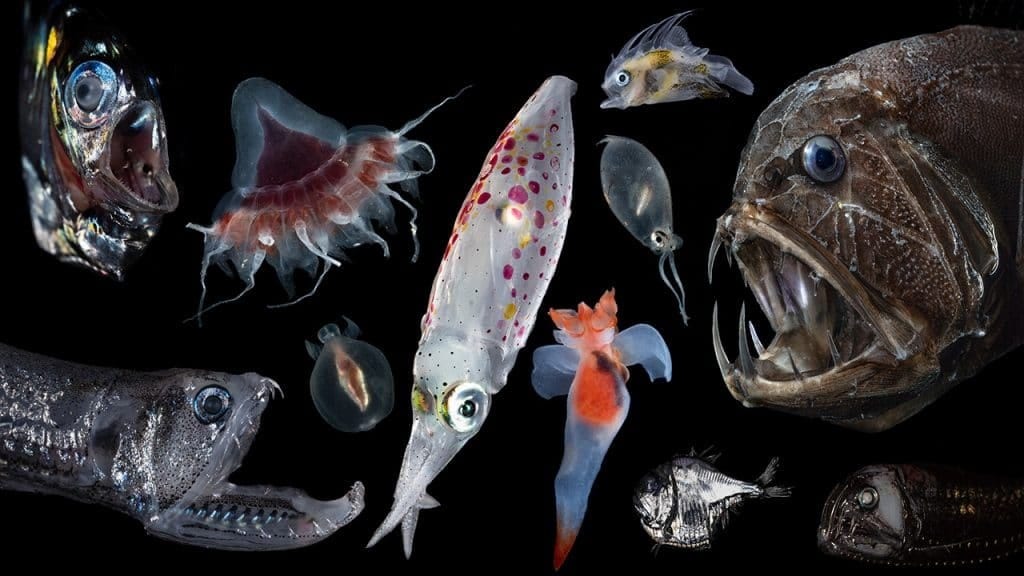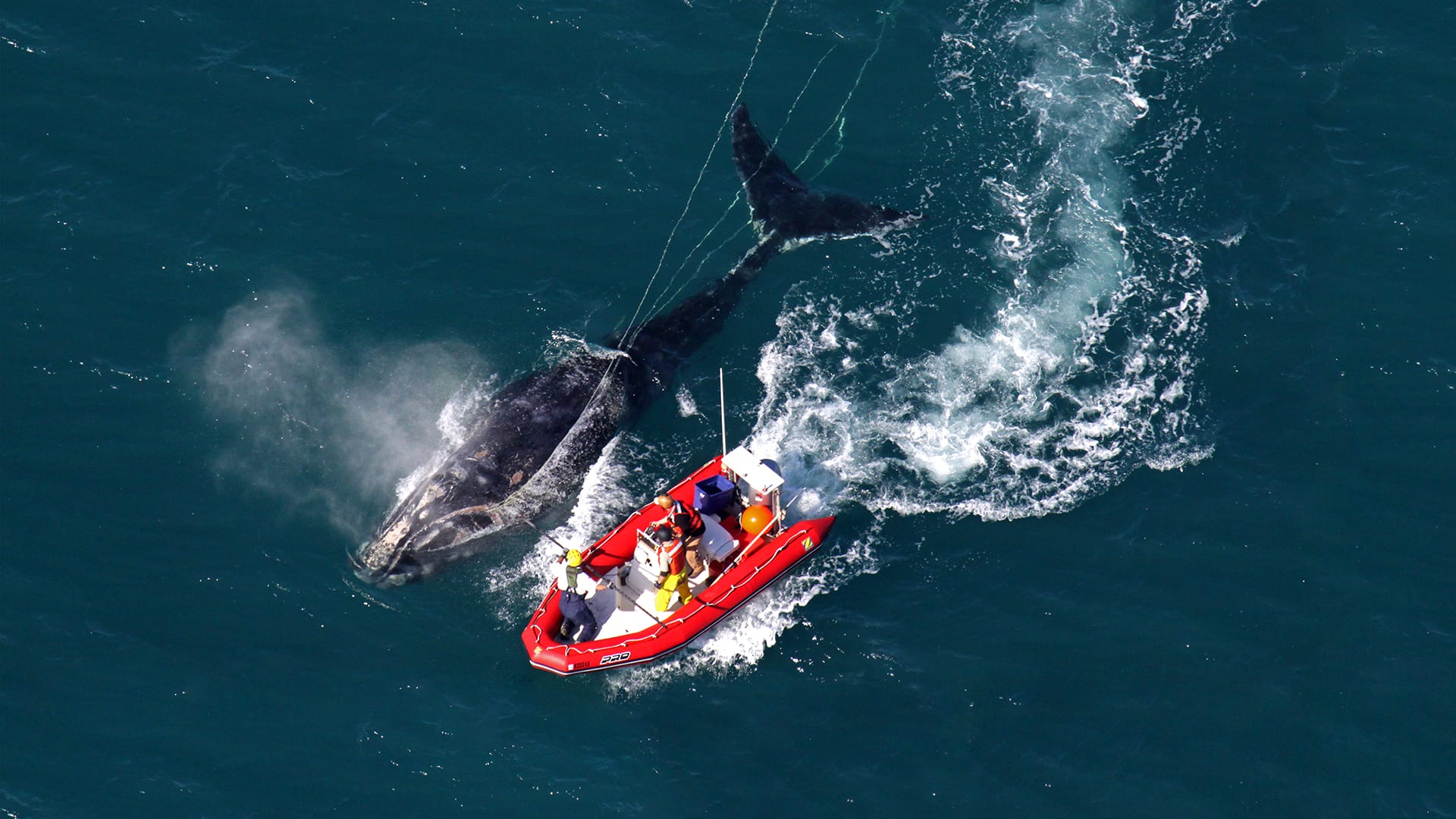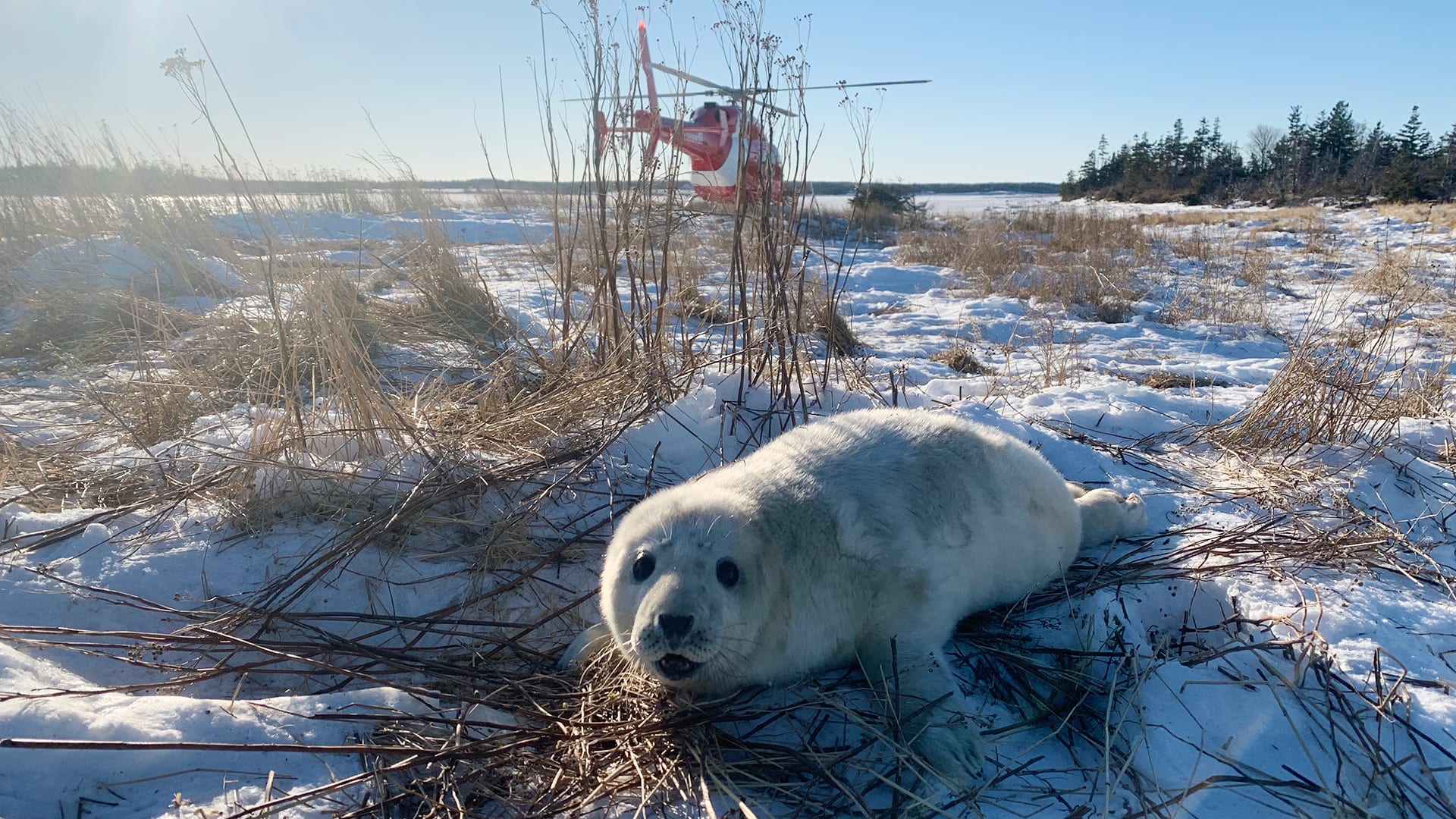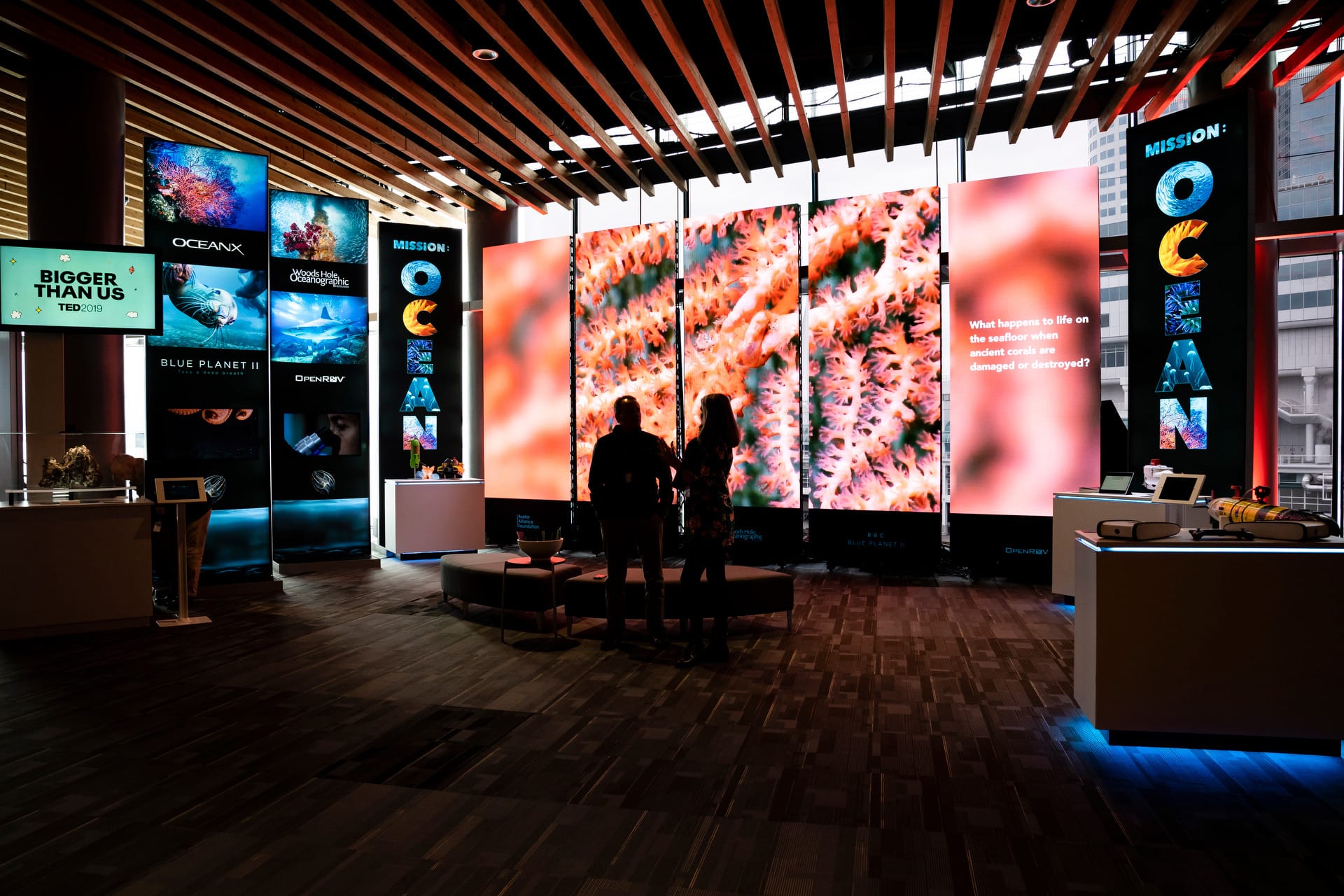News & Insights
Ocean science into action
From collaborations with fishermen to whale-sensing smart cameras, these five solutions-based stories will give you hope in 2021
Read MoreSmart cameras keep lookout for endangered whales
A ship-mounted thermal imaging system provides real-time detection of whales, which could reduce the number of endangered marine mammals killed by vessels each year.
Read MoreSpecialized camera system gives unprecedented view of ocean life
With still so much to learn about the planktonic creatures that support the marine food web, scientists with the Northeast U.S. Shelf Long-Term Ecological Research (NES-LTER) project have developed the In-situ Ichthyoplankton Imaging System (ISIIS) to take better images of these microscopic organisms in their natural environment
Read MoreScientists and fishermen team up to film seals in fishing nets
Seals find ease in taking a meal already ensnared in wall-like gillnets cast by fishermen, but at what cost? WHOI biologist Andrea Bogomolni works with the fishing community to record and observe this behavior with the hopes of mitigating marine mammal bycatch
Read MoreSea Ahead
Once upon a time, ocean scientists hung up cans on up a tree on Bikini Atoll to measure wave height in the Marshall Islands during nuclear weapons testing. Today, ocean technologies and data harvesting are heading somewhere big, from swarming bots, to more autonomous submersibles, and the miniaturization of ocean sensors
Read MoreOverhaul to take Alvin to greater extremes
The Human Occupied Vehicle (HOV) Alvin returned to Woods Hole, Mass. this spring for the final phase of an overhaul that will allow the submarine to dive to 6,500 meters.
Read More‘High-octane’ hurricane fuel swirls in the Gulf of Mexico
Researchers deploy an arsenal of underwater floats to monitor the Loop Current—one of the Atlantic Ocean’s fastest and warmest currents—to collect critical data for hurricane forecasting.
Read MoreThe Rise of Orpheus
WHOI’s new deep-sea autonomous underwater vehicle moves one step closer to exploring the hadal zone—the deepest region of the ocean—to search for new clues about the limits of life on Earth, and possibly beyond.
Read MoreThe Rise of Orpheus (Part 2)
WHOI’s new deep-sea autonomous underwater vehicle moves one step closer to exploring the hadal zone—the deepest region of the ocean—to search for new clues about the limits of life on Earth, and possibly beyond.
Read MoreThe Rise of Orpheus (Part 1)
WHOI’s new deep-sea autonomous underwater vehicle moves one step closer to exploring the hadal zone—the deepest region of the ocean—to search for new clues about the limits of life on Earth, and possibly beyond.
Read MoreRapid Response at Sea
As sea ice continues to melt in the Arctic and oil exploration expands in the region, the possibility of an oil spill occurring under ice is higher than ever. To help first responders cope with oil trapped under ice, ocean engineers are developing undersea vehicles that can map oil spills to improve situational awareness and decision making during an emergency.
Read MoreA tunnel to the Twilight Zone
Scientists track hungry blue sharks as they ride swirling currents down to the ocean twilight zone—a layer of the ocean containing the largest fish biomass on Earth
Read MoreCan thermal cameras prevent ship strikes?
Researchers are testing the effectiveness of thermal IR cameras for automated whale detection to help prevent ship strikes in the narrow channels of British Columbia’s Gulf Islands.
Read MoreFish with Flashlights
Down in the dark and shadowy ocean twilight zone, countless species—bristlemouths, lanternfishes, jellies, and others—rely on bioluminescence for a variety of important functions, including finding their next meal, outsmarting predators, and looking for mates.
Read MoreScientists investigate global spread of stinging jellyfish
New invasions reported in New England and Sweden, prompting researchers to look at a variety of potential causes including transportation, warmer ocean temperatures, and a resurgence of eelgrass.
Read MoreBringing Light into Darkness
WHOI scientists and engineers tackle the challenge of illuminating life in the sunless waters of the ocean twilight zone
Read MoreUntangling Impacts on Right Whales
Whale scientists look for new ways to mitigate whale entanglements in fishing lines
Read MoreSeal Spy
Drones helps WHOI scientist measure the body mass of mother and pup seals during lactation
Read MoreWHOI Collaborates on a “Bigger Than Us” Mission for the Ocean at TED2019
WHOI Deep Submergence Laboratory director Andy Bowen and BBC Blue Planet II producer Orla Doherty talk at the Mission:Ocean exhibit at the TED 2019 annual conference in Vancouver. The immersive […]
Read More

